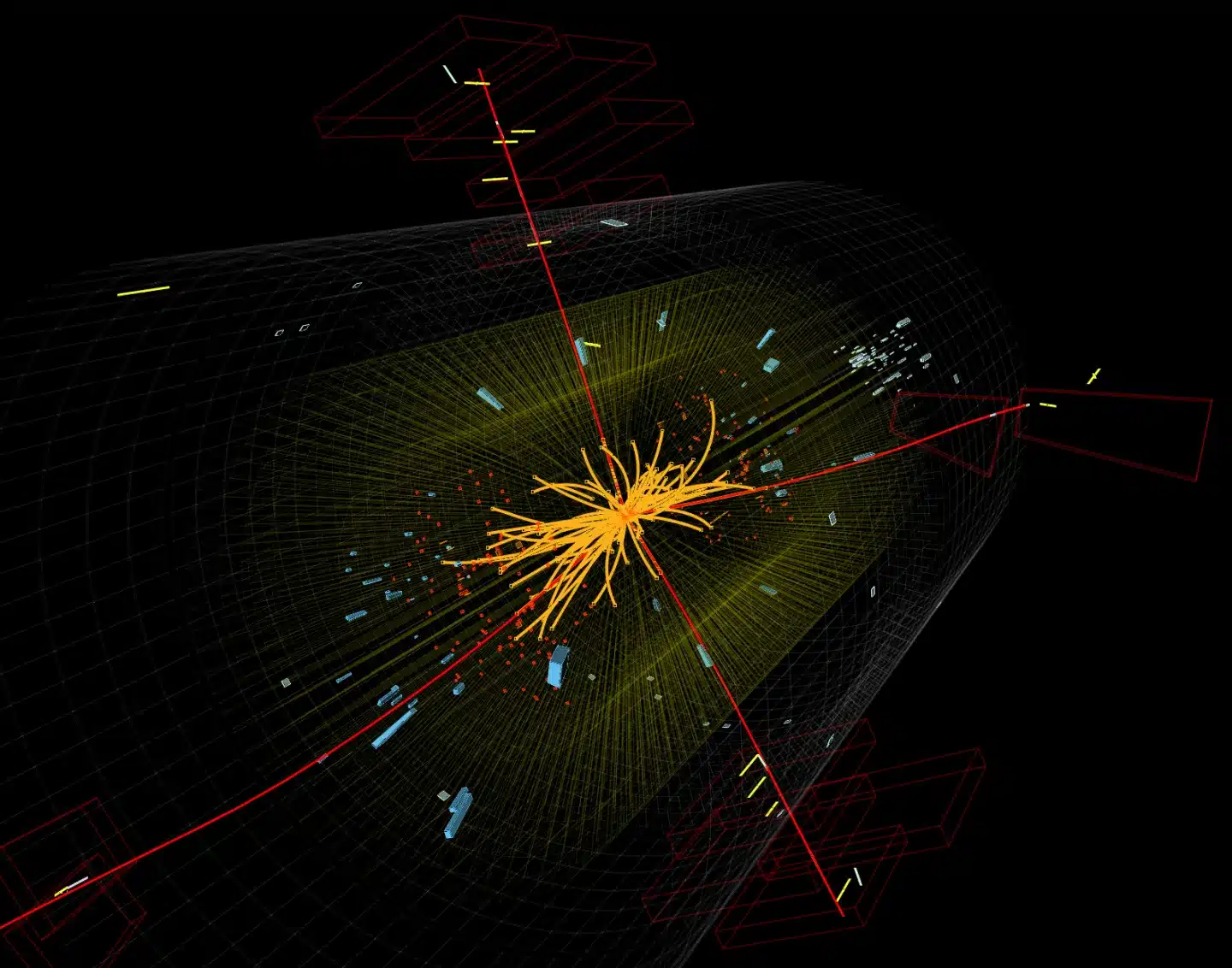About Higgs Boson
- The Higgs boson is the fundamental force-carrying particle of the Higgs field, which is responsible for granting fundamental particles their mass.
- This field was first proposed in the mid-sixties by Peter Higgs, for whom the particle is named.
- The particle was finally discovered on July 4, 2012, by researchers at the Large Hadron Collider (LHC), the most powerful particle accelerator in the world, located at the European particle physics laboratory CERN, Switzerland.
- The LHC confirmed the existence of the Higgs field and the mechanism that gives rise to mass and thus completed the standard model of particle physics.
- It is one of the 17 elementary particles that make up the Standard Model of particle physics, which is scientists’ best theory about the behaviors of the universe’s most basic building blocks.
- Higgs boson plays such a fundamental role in subatomic physics that it is sometimes referred to as the “God particle.”
- Features:
- The Higgs boson has a mass of 125 billion electron volts, meaning it is 130 times more massive than a proton.
- It is also chargeless with zero spin, a quantum mechanical equivalent to angular momentum.
- It is the only elementary particle with no spin.
- What is a Boson?
- A boson is a “force carrier” particle that comes into play when particles interact with each other, with a boson exchanged during this interaction. For example, when two electrons interact, they exchange a photon, the force-carrying particle of electromagnetic fields.
- Because quantum field theory describes the microscopic world and the quantum fields that fill the universe with wave mechanics, a boson can also be described as a wave in a field.
- So, a photon is a particle and a wave that arises from an excited electromagnetic field, and the Higgs boson is the particle or “quantized manifestation” that arises from the Higgs field when excited.
- That field generates mass via its interaction with other particles, and the mechanism carried by the Higgs boson called the Brout-Englert-Higgs mechanism.
- Particles that interact — or “couple” — with the Higgs field more strongly are granted greater masses.
- Even the Higgs boson itself gets its massfrom its own interaction with the Higgs field.
- One particle not granted massby the Higgs fieldis the basic particle of light, the photon. This is because spontaneous symmetry breaking doesn’t happen for photons as it does for its fellow force-carrying particles.
This mass-granting phenomenon also only applies to fundamental particles like electrons and quarks. Particles like protons, made up of quarks, get most of their mass from the binding energy that holds their constituents together.
Q1: What are Quarks?
A quark is one of the fundamental particles in physics. They join to form hadrons, such as protons and neutrons, which are components of the nuclei of atoms. The study of quarks and the interactions between them through the strong force is called particle physics.
Source: Physicist Peter Higgs, Who Discovered ‘God Particle’, Dies At 94
Last updated on December, 2025
→ Check out the latest UPSC Syllabus 2026 here.
→ Join Vajiram & Ravi’s Interview Guidance Programme for expert help to crack your final UPSC stage.
→ UPSC Mains Result 2025 is now out.
→ UPSC Notification 2026 is scheduled to be released on January 14, 2026.
→ UPSC Calendar 2026 is released on 15th May, 2025.
→ The UPSC Vacancy 2025 were released 1129, out of which 979 were for UPSC CSE and remaining 150 are for UPSC IFoS.
→ UPSC Prelims 2026 will be conducted on 24th May, 2026 & UPSC Mains 2026 will be conducted on 21st August 2026.
→ The UPSC Selection Process is of 3 stages-Prelims, Mains and Interview.
→ UPSC Result 2024 is released with latest UPSC Marksheet 2024. Check Now!
→ UPSC Prelims Result 2025 is out now for the CSE held on 25 May 2025.
→ UPSC Toppers List 2024 is released now. Shakti Dubey is UPSC AIR 1 2024 Topper.
→ UPSC Prelims Question Paper 2025 and Unofficial Prelims Answer Key 2025 are available now.
→ UPSC Mains Question Paper 2025 is out for Essay, GS 1, 2, 3 & GS 4.
→ UPSC Mains Indian Language Question Paper 2025 is now out.
→ UPSC Mains Optional Question Paper 2025 is now out.
→ Also check Best IAS Coaching in Delhi

















